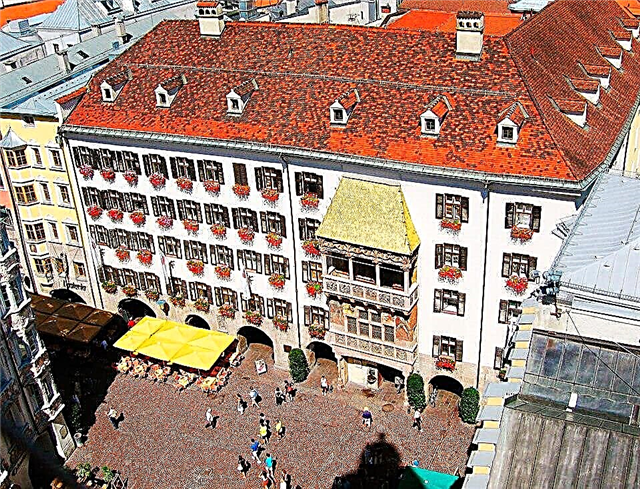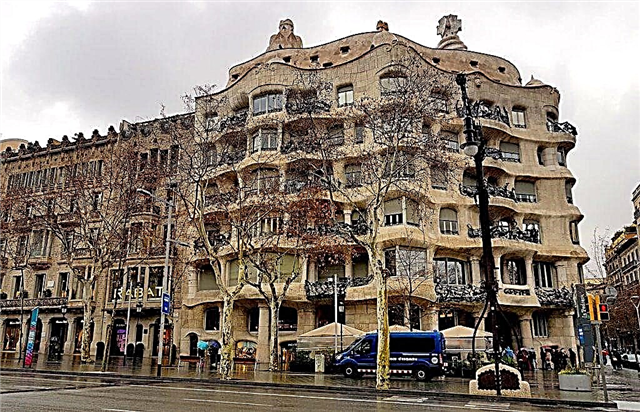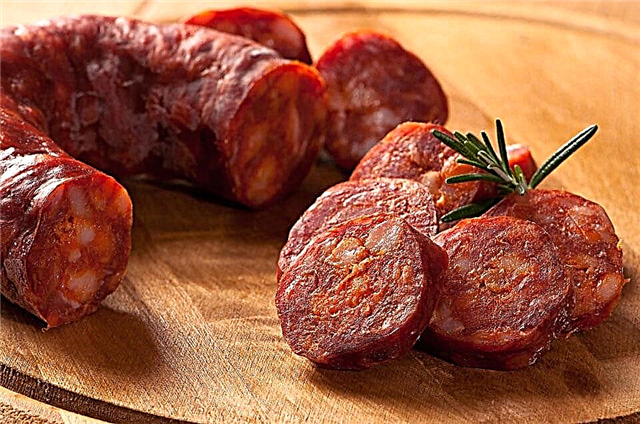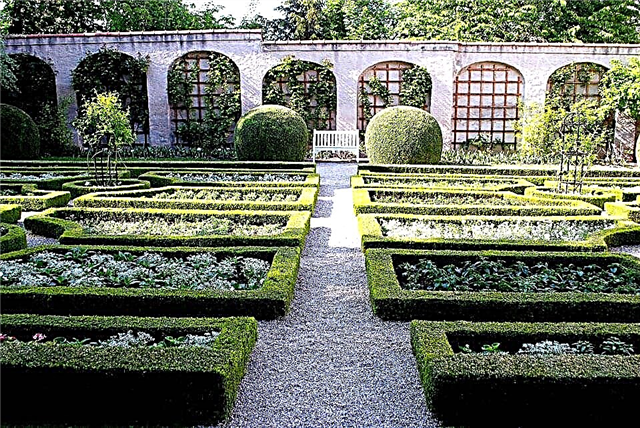One of the oldest and most beautiful cities in Austria, the administrative center of the Tyrolean federal state Innsbruck is interesting for its cultural, sports and tourism traditions. In this amazing city, filled with architectural and historical monuments, festivals of early music are held annually, 2 times it was the arena of the Winter Olympics and other international sports competitions.
In the appearance of Innsbruck, where the legendary Middle Ages, European aristocracy and modern democratic civilization are closely intertwined, you can see a lot of interesting things that boggle the imagination of even very sophisticated tourists. A number of cultural and historical attractions literally mesmerize with their originality and beauty. Let's talk about the 20 most interesting sights of Innsbruck.
Ambras Castle

Luxurious castle complex, built in the 16th century. - the merit of one of the most enlightened rulers of the Habsburg dynasty, Duke Ferdinand II, who patronizes the development of science and art in the country. The admirable palaces were built to house priceless antiques, paintings, sculptures and other arts. Now the Upper Castle is a magnificent gallery of portraits of members of the Habsburg family, painted by the most eminent painters of that era, Van Dyck, Titian, Velazquez and others.

The lower castle is a repository of objects of various types of art, unusual curiosities, tools, devices (the Chamber of Arts and Curiosities); knightly armor, weapons (Armory). A walk in the adjacent park is a complete delight from the French and English design, from colorful flower beds, an artificial lake inhabited by water birds and peacocks living on the shores. Those who come to Ambras Castle in the summer can listen to concerts of baroque music.
Opening hours: every day, from 10.00 to 17.00. Ticket prices: adults - 10 €, children under 19 years old - b / p.
Basilica and monastery of Wilten

At the foot of the Bergisel hill (outskirts of Innsbruck) there are legendary objects - the monastery and the Wilten church, built in the 13th century. Tradition says that this monastery was built by the conqueror of the dragons, the Germanic giant Haymon, as a sign of atonement for the murder of Tirsu, the Tyrolean giant. The currently functioning monastery has not preserved the original appearance of the external design, which was subjected to changes in the Baroque style in the 17th-18th centuries. After the destruction of World War II, the monastery acquired its final form at the end of the 20th century, revealing its bright beauty to the world.

There are ancient monuments, authentic ruins of Romanesque and Gothic buildings, the Abbey Museum, a stunning silver and gold statue of the giant Haymon. The grandiose building of the basilica of the same name, which has been rebuilt several times, also pleases the eye with its luxurious facade and dazzlingly beautiful interior decoration. Marble floors and benches, graceful stucco lace, highly artistic wall and ceiling paintings, a magnificent altar with a statue of St. Mary - everything makes you die with admiration!
Opening hours: every day, 07.00 - 19.00, except for mass, where tourists are not allowed. Entrance b / p, donations are allowed.
Hofburg Imperial Palace
A monumental building with round towers on the sides, impressive in its grandeur - a symbol of the mighty greatness of the Roman Empire, the residence of its rulers was erected in 1460. The dazzling white facades of the palace, decorated in the Baroque and Rococo styles, emerald green domes amaze with their external splendor. The 4 wings of the palace house 25 apartments, all finished with the same luxury and splendor. The Hofburg underwent one reconstruction in the 18th century. by decree of the enlightened Empress Maria Teresa, when Gothic elements were replaced by Baroque and Rococo decor.
The last renovation (1990) made the Imperial Palace a convenient tourist attraction. There is a lot to see here: a huge collection of classic portraits and paintings, unique furniture, tapestries, carpets, stunning-looking mirrors, wall murals, artistic carvings and embossing - testify to the enormous wealth of the Habsburg dynasty. The portraits of Maria Teresa and her 16 descendants are impressive.
Opening hours: every day, 09.00-17.30 (from September to June); 09.00-18.00 (July-August). Entrance fee: adult - 28.80 €, children - 17 €. Innsbruck Card holders - b / p.
Maria Theresa street

Pedestrian street, analogue of the Moscow Arbat, st. Maria Theresa is a favorite place for shopping and walking, carefree relaxation in cozy cafes with a cup of Austrian coffee. Historical buildings are lined up on both sides of the street like a bright mosaic of a colored kaleidoscope - charming architectural monuments captivating the eye with the beauty of their design. Exotic dwarf trees bloom in huge pots as a floral decoration against the backdrop of a perfectly laid out granite pavement.
The once rural modest street in the 16-17 centuries began to be built up with luxurious baroque-style palaces, which belonged to the local nobility, who wanted to settle closer to the gate of St. Jorgen. Particularly prominent in the series of buildings are the Palais Gump, which houses the Parliament of Tyrol; Trapp Palace, with a cozy courtyard and a cafe. Noteworthy are the Arc de Triomphe, decorated with gilded stucco, the chapel of St. George and the column of St. Anna, made of stone and decorated with graceful sculptures of a saint and angels. A trip to the picturesque shopping galleries "Kaufhaus Tyrol" and "Pathhouse Passage" will delight you.
Helblinhaus

This architectural masterpiece, which is an outstanding monument of the 15-17th centuries, is located on the street. Duke Frederick next to another remarkable building - a house with a "golden roof". Now Helblinhaus is an ordinary residential building with an unusual facade decor, when the entire space under the windows is occupied by ornate stucco patterns of pinkish-golden color in the most daring Rococo style. The building of the house is a true work of architecture and art of artistic stucco molding. Helblinhaus is available for external b / n inspection at any time of the day, tourists cannot go inside.
Museum "Panorama of Tyrol"

There is a place in Innsbruck sacred for the Tyroleans, similar to the Russian "Borodino panorama". Museum "Panorama of Tyrol", dedicated to the 200th anniversary of the liberation battle of the Tyroleans against Napoleon's troops (1809), is located on the Brezigel hill. In fact, this is a museum complex, consisting of separate exhibitions that capture different moments of the fateful battle. The central part of the panorama directly depicts the events of the battle: close combat, the attack of the French infantrymen, episodes of the heroic deeds of the Tyroleans, etc.
Anyone can find out the details of interest to him using an interactive screen installed near each section of the panorama. There are sculptures of individual participants in the battle, famous for their courage and dedication. In the adjacent park there is a monument to the leader of the rebellious peasants, Andreas Gofer, with a patriotic inscription "For God, the Emperor and the Fatherland." 4 sections of the grandiose exhibition illustrate in detail the history of the development of Tyrol.
Visiting time: Monday. - Saturday, 09.00 - 18.00, Sunday - 10.00 - 16.30. Innsbruck Card holders - b / p.
City Tower in Innsbruck

In a close row of buildings on the street. Duke Friedrich, there is a rare building of the city tower of the 15th century. It stands out for the height of its gray pyramid, topped by a round tower with the same round dome. The tower was erected as a sentinel, from where heralds informed the townspeople of the events that had taken place, indicated the exact time and warned of danger.Public executions, fairs and other mass events were held at the foot.
From the observation deck, located at a height of 31 meters, you can climb and observe the wonderful panorama of the city and the alpine peaks glistening with snow. If you wish, you can rent a chamber hall (for 15 people) and admire the panorama, combining it with a delicious Austrian feast.
Visiting hours: every day, 10.00 - 20.00 (June-September); 10.00 - 17.00 (October-May). Entrance ticket: adult - 3 €, children - 1.5 €, b / p - with Innsbruck Card.
Tyrolean Folk Art Museum

Popular among tourists, the Museum of Folk Art fully reflects the national applied arts of the Tyroleans, endowed with different talents. There are 22 halls of the museum in the former Franciscan monastery with the adjoining Hofkirche church. Some of the exhibitions are rooms with precise medieval interiors, furnished with authentic furniture, household items of past eras.
Here you can see simple and intricate handicrafts, jewelry, embroidered Tyrolean costumes, national musical instruments, unusual boats, samples of ancient weapons, ritual masks. Walking through the halls of the museum, you can get a vivid idea of one of the most interesting peoples of Europe - the Tyroleans.
Opening hours: every day, 09.00 - 17.00. Entrance price: adult - 10 €, children - 6 €.
Ferdinandium Museum
The Tyrolean State Museum is named after Duke Ferdinand, a renowned collector and ethnographer who has dedicated his life to researching the history of Tyrol. The rich collection of various artifacts collected by the Duke has found its place in the oldest national museum, opened in 1823. Over the years, the expositions of the Ferdinand Museum have expanded significantly, adding new exhibits from prehistoric eras to modern times.
Here are the remains of fossil mammoths, ancient fossils and manuscripts, primitive tools, medieval household items, musical instruments, furniture from different centuries. Fans of painting will appreciate the magnificent collection of paintings by the great artists of Europe, marble statues by famous sculptors. Walking through the halls of the museum, you can visually feel the 30-thousand-year history of the Tyrolean land.
Opening hours: 09.00-17.00 (in winter - until 16.00) daily, except Mondays. Ticket price: adult. - 11 €, children - 8 €.
Golden roof

A kind of museum with such a conventional name "Golden Roof" is an ancient building of the residence of the rulers of Tyrol, built in the Gothic style by order of Archduke Frederick IV (early 15th century). The house with a "golden roof" is a symbol of medieval splendor and incredible wealth of the ruling elite. Actually, not the whole house is covered with such a roof, but only the balcony from which Emperor Maximilian I liked to watch knightly tournaments. To please the sovereign, the Archduke ordered to make the roof of the balcony from copper plates coated with gold (2,657 pieces).
In addition to the dazzlingly shining roof, attention is drawn to intricate patterns on 3 balcony tiers, skillfully carved spiers in the form of figured turrets of the upper tier, and an amazing painting of the lower tier. The state emblems of all regions of Maximilian's empire are placed on the balcony balustrade. The exposition of the museum "tells" about the important historical landmarks of Tyrol.
Visiting hours: every day, 10.00-17.00 (May-September); Tuesday-Sunday (October-April).
Crystal worlds "Swarovski"

The original museum, opened in the Innsbruck suburb of Wattens, to commemorate the 100th anniversary of the renowned company "Swarovski", is located in a rocky cave guarded by a stone giant with fiery eyes and a waterfall flowing from his mouth. Austrian artist Heller, working on the project, probably drew an analogy with the Sinbad cave. The museum really resembles a magical treasury filled with sparkling crystals.
A glass tunnel leads to the exhibitions, the walls of which are dotted with aphorisms of philosophers and sages about crystals and crystal, preceding the inspection of the treasures. An impressive excursion for many ends with a visit to the store, where you can buy some souvenir or unique piece of jewelry. You can get to the museum by bus, which departs hourly from 09.10 am from the central station (platform D). Shuttle buses run every 2 hours (from 09.00 to 17.00).
The museum is open: every day, from 09.00 to 18.30. Entrance price: adult - 19 €, children (from 6 to 14 years old) - 7.5 €, children (from 5 years old) - non-paid.
Cathedral of St. James

The amazingly beautiful Baroque cathedral, located next to the Hofburg Palace, was erected in the 18th century. and, by right, is considered not only the most delightful temple in Europe, but also an unsurpassed architectural masterpiece. The Cathedral of St. James is a tall grandiose structure, decorated with 2 figured domed towers, round windows and numerous graceful bas-reliefs.
The luxurious exterior is matched by the interior design, with magnificent frescoes, wall and ceiling moldings, and many stunning sculptures. The altar wall is decorated with the artistic masterpiece of the German painter Cranach "Our Lady", there are also other priceless works of art. The property of the temple is a huge metal organ, sparkling with the glitter of gold.
Visiting hours: (in winter), Mon-Sat, from 7.30 to 18.30, Sun - from 8.00 to 18.30. in summer - Mon-Sat, from 7.30 to 19.30, Sun - 08.00-19.30. Entrance - b / p.
Hofkirche church

Next to the Hofburg Palace there is a majestic Gothic building erected in memory of Emperor Maximilian I - the Hofkirch Church. Construction took 30 years, so the appearance of the building reflected 3 architectural styles: the exterior facade of the church is Gothic, the central portal is in the style of the Renaissance, and the interior interiors are decorated in the spirit of the Baroque. The luxurious decoration of the church reflects the grandeur and wealth of the Roman Empire of that era. The cenotaph (symbolic grave) of Maximilian, made of black marble, is richly decorated with bronze bas-reliefs, monumental sculptures and bronze monuments of the 28 ancestors of the emperor.
The cenotaph in the style of the German Renaissance was built for 80 years. In the old chapel, the altar of the Virgin Mary is made of high standard silver. The remains of Archduke Ferdinand II, Tyrolean national hero Hofer, lie here. The pride of the church is 2 organs, one of which is in the form of a "swallow's nest" for half a millennium.
Visiting hours: 09.00-17.30 (July-August); 09.00-17.00 (September-June). - 3 €, studio - 2 €, school - 1.5 €.
Hofgarten park

A park with 600 years of history on the outskirts of the Old Center - a city recreation area, a landscaped garden, a venue for numerous events. Trees planted by the Empress Maria Teresa (18th century) still grow in it, and there is a pavilion of that era. Picturesque ponds, a palm house (17 thousand species of living plants), playgrounds attract local residents and tourists here. This is the only park, on the lawns of which you can freely walk, admiring the beautiful landscape landscapes.
Free admission every day, visit to the "Palm House" - on weekdays.
Grassmire Bells Museum

In the grandiose museum-workshop "Grassmire" you can not only see the richest collection of various bells, but also get acquainted with the process of their manufacture. 14 generations of the Grassmire family have been skilled craftsmen in the casting of bells, distinguished by their high sound quality and durability. The technological subtleties of manufacturing have survived to this day and remain a secret from outsiders, so Grassmire bells continue to be cast in the existing workshops.
The collection of the museum - hundreds of bells from the smallest to giant bells amazes with its variety of shapes, sizes and brilliance. In addition to bells, the expositions showcase various instruments, items of professional equipment, and all kinds of devices. In the foundry, one can observe the production stages of the creation of a true masterpiece of steel and copper.
Visiting hours: all year round Mon-Fri, 09.00-17.00, from May to October also open on Saturdays, 9.00-17.00. Entrance price - adult - 8 €, children (from 6 to 14) - 5 €, group (from 15 people) - 5 €.
Triumphal Arch

Unlike the triumphal arches of other cities, the Innsbruck arch was erected by Empress Maria Teresa not in honor of a military victory, but as a sign of mourning for her deceased husband Franz. It is noteworthy that his death occurred during the wedding of their son, therefore, the design of the majestic building reflected 2 opposite feelings - sadness and joy. The northern part is decorated with symbols of love and happiness, and the southern part is decorated with mourning signs, mournful sculptures. Overall, Triumfforte makes a strong impression.
Alpine zoo

The uniqueness of the Innsbruck Zoo is not only its alpine (727 m.) Location on the slope of Nordkette, but also its narrow theme: only the inhabitants of the local fauna are represented here. In ideal conditions, the alpine zoo contains more than 2 thousand different animals and birds (150 species).
Open enclosures with walkways, transparent terrariums allow visitors to freely and safely observe the animals of the zoo. The fresh water aquarium (230 thousand liters) contains local fish and amphibians. The 12-meter panoramic window shows the underwater world in all its glory.
Working hours: 09.00-18.00 (Apr-Oct.); 09.00-17.00 (March-November). Ticket price: adult. - 9 €, children (4-5 years old) - 2 €, (6-15 years old) - 4.5 €; students and pensioners - 7 €.
Funicular Hungerburgbahn

Incredible pleasure can be experienced while climbing on the ultra-modern Hungerburgbahn lift, named after one of the mountain peaks. From the center of the Old Town in 8 minutes you climb up and find yourself in the amazing world of alpine landscapes of the Hungerburg peak.
Moving to another station, you climb Mount Seegrube. Or you can go directly from the city to the Hafelerkar observation deck (alt. 2300 m) to observe the stunning panorama of Tyrol. Everything here is admirable: the avant-garde design of the funicular, stations, entertainment programs, unforgettable impressions!
Opening hours: weekdays - 07.15-19.15; weekends and holidays. - 08.00-19.15, on Fridays evening flights - 18.00-23.00.
Ticket price: (round trip), adult. 4.4 €, penny - 6.6 €, teenagers (14-19) - 5.9 €; children (under 14) - 4.1 €; up to 6 years old - b / p.
Nordkettenbahn cable car

A dizzying journey to the Hafelekar alpine peak (2269 m above sea level) is made by those who go there by the Nordkettenbahn cable car leading from the Congress station (next to the Golden Roof) The modernized lift is extremely reliable and comfortable, modern trailers are the most comfortable , the views below will delight you with unearthly beauty! A visit to the "Alpine Zoo", "Railway Museum" will add positive emotions.
Working hours: every day - 09.00-17.00. Ticket price: adult - from 4 €.
Springboard "Bergisel"

Among the spiky greenery of the coniferous forest of the hill of the same name is the legendary ski jump "Bergisel", with its site resembling a UFO. The Olympic flame lit up on it 2 times, the best skiers of the planet performed unimaginable pirouettes. After the reconstruction (2002), which made the springboard a high-class sports facility, skiers of different categories still train here.
But it is also available to ordinary people who can have a good rest here, sit in a cafe, walk around, admire the surrounding views from above and watch the workouts. If you wish, you can visit the office premises of "Brezigel" (when there is no competition).
Working hours: every day (except Tuesday) - 10.00-17.00 (November-May); 09.00-18.00 (June-October). Tickets - adult - 9.5 €, children - 4.5 €.
In Innsbruck, GuruTurizma recommends the following hotels:











